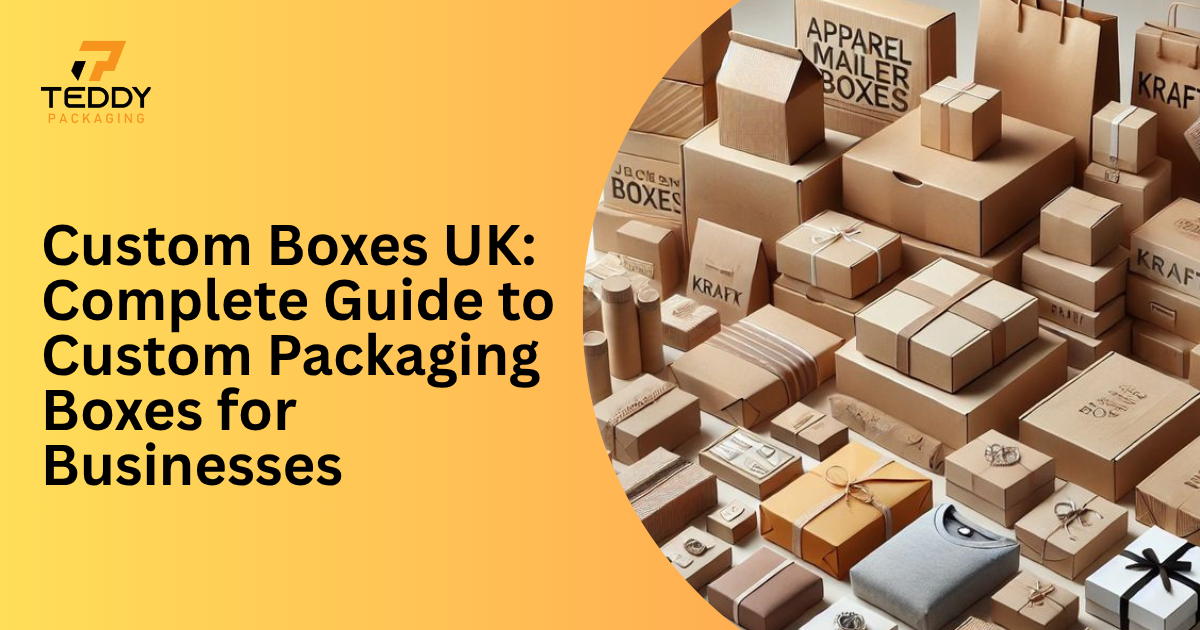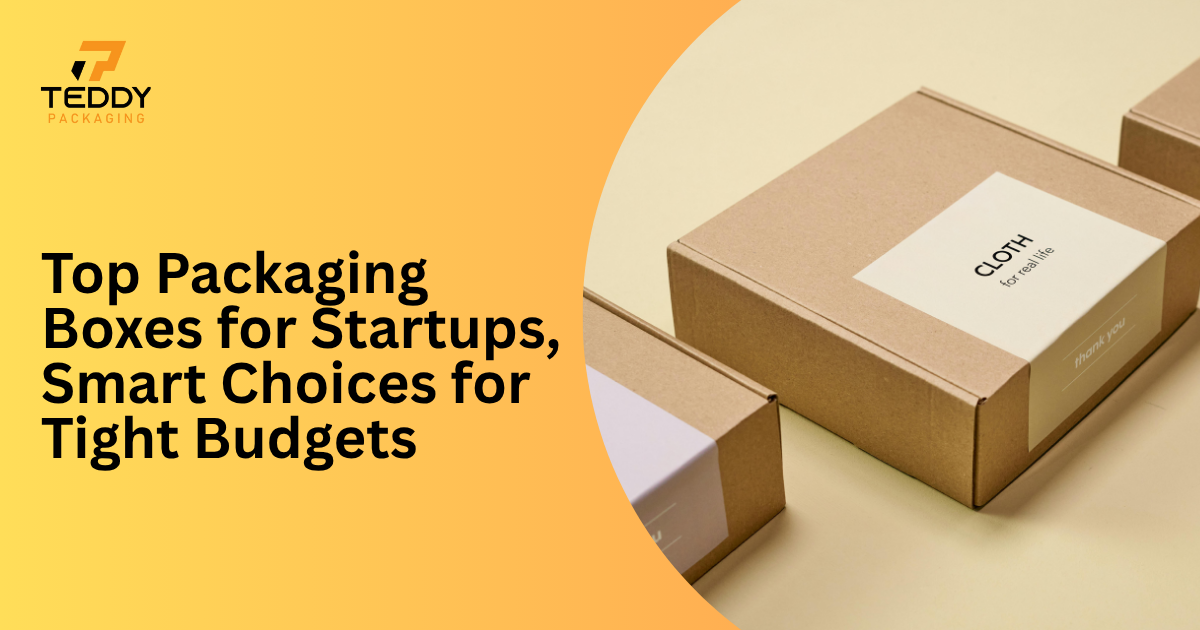Introduction
Choosing the right box matters more than most people think. Whether you are shipping products across the UK, displaying items in store, or designing premium packaging, understanding the difference between corrugated and cardboard boxes helps you protect products, control costs, and present your brand well. This guide explains the practical, structural, and commercial differences, so you can pick the best option for your needs.
1. What People Usually Mean by Cardboard
“Cardboard” is a general term people use to describe many paper-based materials used in packaging. In everyday conversation, it can mean anything from thin paperboard to thicker sheets. In the packaging industry, more specific names are used, but shoppers often say cardboard when they mean a simple paperboard box.
- Commonly refers to single-layer paperboard used for cereal boxes and small retail packs
- Lightweight, inexpensive, and easy to print on
- Best for low-weight, low-impact items and inner packaging
2. What Corrugated Actually Is
Corrugated board is a multi-layered material made from fluted paper sandwiched between flat liners. That fluted layer gives corrugated boxes their strength and shock-absorption, making them ideal for shipping and protecting heavier or fragile items.
- Consists of linerboard plus a fluted medium for strength and cushioning
- Available in single-wall, double-wall, and triple-wall options
- Designed for durability in transit and storage
3. Strength and Protective Performance Compared
One of the biggest differences is protection. Corrugated boxes outperform most cardboard styles for stacking, impact resistance, and long-term storage. Simple paperboard struggles with weight and moisture, whereas corrugated resists crushing and puncturing much better.
- Corrugated offers superior compression strength and cushioning
- Paperboard is fine for display and light items, not for heavy shipping
- Choose corrugated for fragile, heavy, or long-distance shipments
4. Typical Uses for Each Type
Knowing the common applications helps decide which to use. Cardboard or paperboard often appears as retail cartons, cosmetic sleeves, and inner packaging. Corrugated is the workhorse of logistics, used for e-commerce parcels, food and beverage delivery, and industrial transport.
- Cardboard: retail packaging, cosmetic boxes, gift boxes with lids
- Corrugated: mailer boxes, palletised shipments, protective inner partitions
- Use each where its advantages align with product needs
5. Print, Finish, and Branding Differences
Both materials can carry good print, but the finish options and perceived value differ. Paperboard can be finished to a high-end look with spot varnish, metallic foils, or soft-touch lamination. Corrugated can be printed well, too, but it lends itself to a kraft look and functional branding when strength matters.
- Paperboard supports high-fidelity print and luxury finishes
- Corrugated suits bold graphics and practical printing for logistics
- Combine both: corrugated outer box, printed paperboard inner sleeve
6. Sustainability and Recycling Considerations
Both corrugated and paperboard are recyclable, but there are differences in lifecycle impact and material sourcing. Corrugated often uses recycled fibres and has strong recycling streams in the UK, while luxury-coated boards may require careful recycling methods. Choosing uncoated, recyclable materials helps your sustainability goals.
- Corrugated boxes are widely recycled and often contain recycled content
- Avoid heavy laminations if you want straightforward recycling for cardboard boxes
- Eco-friendly boxes are increasingly available in both formats
7. Cost Comparison and Value for Money
Costs vary with board grade, print, and finish. On raw material alone, paperboard can be cheaper for small runs. However, for e-commerce and shipping, corrugated reduces damage rates and returns, which can make it more cost-effective overall.
- Paperboard: lower initial cost, higher risk in transit
- Corrugated: higher unit cost, lower damage, and return rates
- Calculate cost per delivered sale, not just cost per box
8. Customisation and Structural Options
Both materials can be cut and shaped into bespoke designs. Corrugated offers structural options like partitions, die-cut inserts, and reinforced corners, while paperboard allows fine detail, folding cartons, and luxury add-ons. Your product’s weight, fragility, and retail presentation should guide the choice.
- Corrugated supports complex protective structures and inserts
- Cardboard enables refined shapes and premium finishes
- Ask your packaging partner for prototypes and samples
9. Practical Tips for Choosing Between Them
Make your decision based on product risk, channel, and brand goals. If you ship heavy or fragile items, favour corrugated. If the box is for a point-of-sale luxury presentation and will not be subject to rough handling, paperboard might be best. Where possible, combine both materials to get protection and presentation.
- Use corrugated for e-commerce, wholesale, and long transit routes
- Use paperboard for retail-facing, premium unboxed items
- Consider hybrid solutions: corrugated outer, printed paperboard sleeve
10. Partnering with a UK Packaging Supplier
Working with a local packaging specialist helps you test and refine options quickly. A trusted supplier will offer prototypes, advise on material grades, and balance cost with performance. For UK businesses, choosing a partner who understands local logistics, sustainability expectations, and retail trends saves time and money.
- Request samples and strength tests before ordering large runs
- Ask about lead times, minimum order quantities, and recycling credentials
- Explore customised packaging solutions at Teddy Packaging
Frequently Asked Questions
Q1. Are corrugated and cardboard recyclable?
Yes, both are recyclable, but it depends on coatings and laminates. Plain corrugated and uncoated cardboard is easy to recycle in UK facilities. Avoid plastic laminations if sustainability is important.
Q2. Which is better for fragile items, corrugated or cardboard?
Corrugated is stronger and offers better shock absorption. Its layered structure protects fragile items from crushing and damage during transit.
Q3. Can cardboard look more premium than corrugated?
Yes. Paperboard can be finished with soft-touch coatings, metallic foils, or embossing for a luxury appearance, ideal for cosmetic or retail boxes.
Q4. Is corrugated always more expensive than cardboard?
Not always. Corrugated may cost more per unit, but it often reduces damage and returns, giving better value across your supply chain.
Q5. How do I decide between single-wall and double-wall corrugated?
Use a single wall for medium-weight items and a double wall for heavier or stacked products. The extra layer adds protection during long storage or transport.
Q6. Are there eco-friendly options for both types?
Yes. Both can be made from recycled materials and printed with water-based inks. Look for FSC-certified suppliers to ensure responsible sourcing.
Q7. Should I use corrugated for retail display?
Corrugated display boxes are excellent for in-store promotions and can be printed attractively while maintaining strength and stability.
Q8. Where can I get samples and design help in the UK?
Many UK suppliers offer custom prototypes. Visit Teddy Packaging
for expert design support and high-quality packaging solutions.
Final Thoughts
Choosing between corrugated and cardboard boxes isn’t just about materials; it’s about matching protection, cost, and brand presentation. Corrugated delivers strength for shipping and logistics, while cardboard excels at light, stylish retail packaging. The smartest UK brands use both strategically to protect products, impress customers, and grow sustainably.




